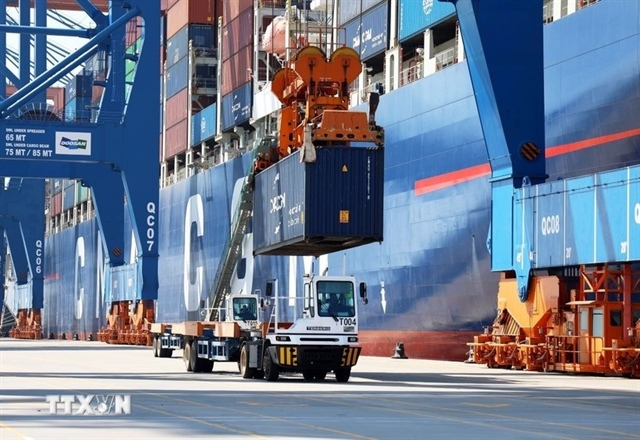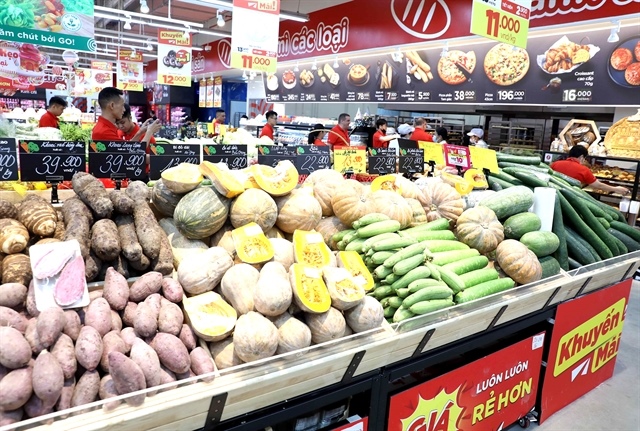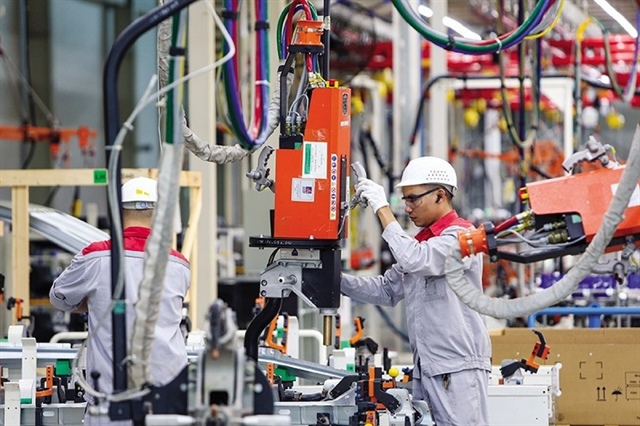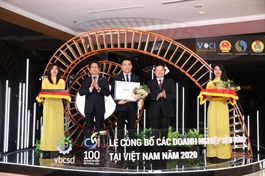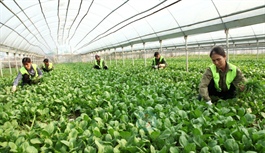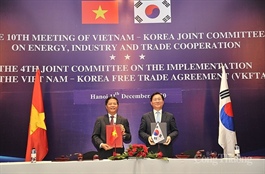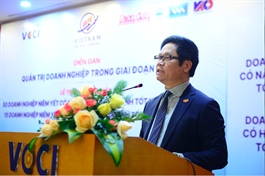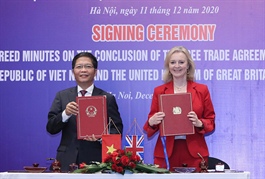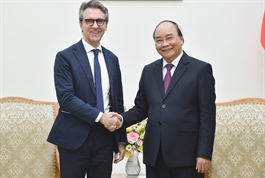RCEP facilitates trade and harmonization of standards
RCEP facilitates trade and harmonization of standards
While the Comprehensive and Progressive Agreement for Trans-Pacific Partnership (CPTPP) and the EU-Vietnam Free Trade Agreement (EVFTA) are designed to maximize trade and investment liberalization, the Regional Comprehensive Economic Partnership (RCEP) agreement is the harmonization of standards to facilitate trade in the region. Vietnam Economic News’ Thu Phuong spoke about the recently signed RCEP agreement with Phung Thi Lan Phuong, Head of the Free Trade Agreement Office under the WTO (World Trade Organization) and Integration Center of the Vietnam Chamber of Commerce and Industry (VCCI).

Phung Thi Lan Phuong, Head of the Free Trade Agreement Office under the VCCI's WTO and Integration Center
|
The RCEP agreement is expected to create the largest free trade area in the world with the development of regional and global value chains that will promote economic development. How will RCEP benefit Vietnam and Vietnamese businesses?
RCEP is the 14th free trade agreement (FTA) Vietnam has signed, and it is Vietnam’s largest FTA in terms of partner size. Before signing RCEP, Vietnam signed nine separate FTAs with one or several RCEP partners. However, RCEP will make a difference thanks to its large scale along with improvements resulting from separate FTAs signed earlier to become a comprehensive agreement opening up great opportunities for the economy as well as Vietnamese enterprises.
Firstly, RCEP will offer further tariff reductions for some Vietnamese exports to RCEP member countries and lift many non-tariff barriers through increased commitments to transparency and harmonization of standards and facilitation of trade between RCEP member countries.
Secondly, with commitments to opening service, investment and public procurement markets, and general rules on intellectual property, electronic commerce (e-commerce) and competition, the agreement will open up new opportunities to attract foreign investment not only from RCEP member countries but also from other countries when investors identify the opportunities associated with Vietnam’s membership in the RCEP.
Thirdly, RCEP is a vital area for many global value chains, with its partners playing a key role in these chains. Joining RCEP, Vietnamese businesses will have a significant opportunity to participate more deeply, efficiently and substantially in these chains.
|
What do you think of RCEP’s rules of origin in relation to Vietnamese exports?
What made ASEAN (the Association of Southeast Asian Nations) and its partner countries determined to negotiate RCEP was the harmonization of the ASEAN+1 FTAs to create favorable conditions for trade between businesses in the region. Harmonization of rules of origin was an important part of the negotiations. Once the RCEP takes effect, businesses will follow the rules of origin that it sets out instead of observing rules of origin of the previous five ASEAN+1 agreements.
How is RCEP different from CPTPP and EVFTA in terms of commitments and benefits for Vietnam?
The 14 FTAs signed by Vietnam complement each other, diversifying import and export market choices and creating more favorable conditions for enterprises in trade with these markets. Compared with CPTPP and EVFTA, RCEP has some differences.
The scope of commitments in RCEP is quite wide, covering many areas similar to those described in the CPTPP and EVFTA. However, the level of commitment in RCEP is not as high as that of these two agreements, and standards in RCEP are set in accordance with the level of development of member countries.
While CPTPP and EVFTA were designed to maximize free trade and investment between member countries, RCEP’s main goal is harmonization of standards to facilitate trade in the region. RCEP also has more commitments on trade liberalization, but this is not the highlight of this agreement, and even for some partners and for some products, RCEP commitments remain the same as those in ASEAN+1 FTAs. But RCEP aims much towards harmonization of standards, setting out general principles to promote trade and investment, and linking member countries in the region.
Although they have different specifications and priorities, FTAs all have the same goal of trade facilitation and increasing business investment opportunities. It can be said that FTAs complement each other, diversifying investment choices and opening up new opportunities.



